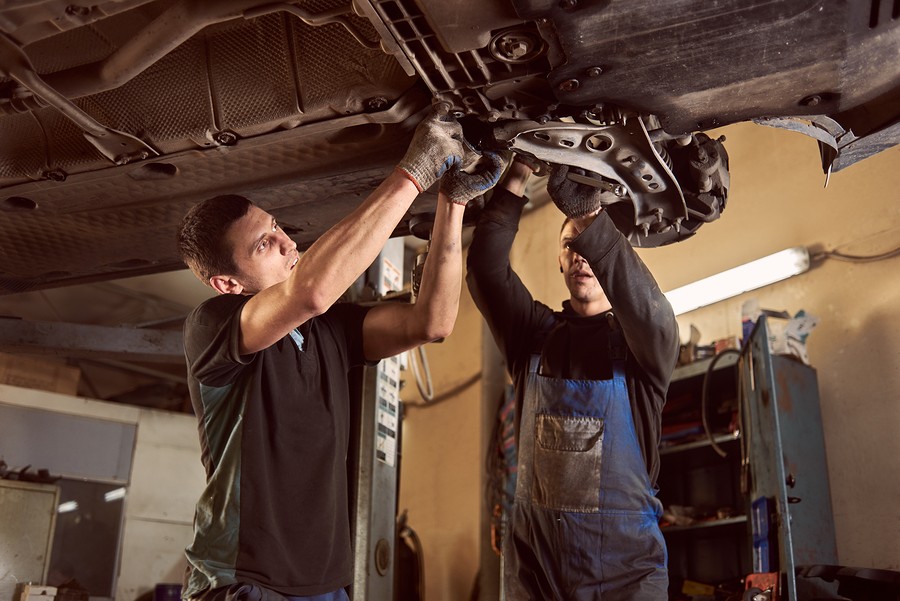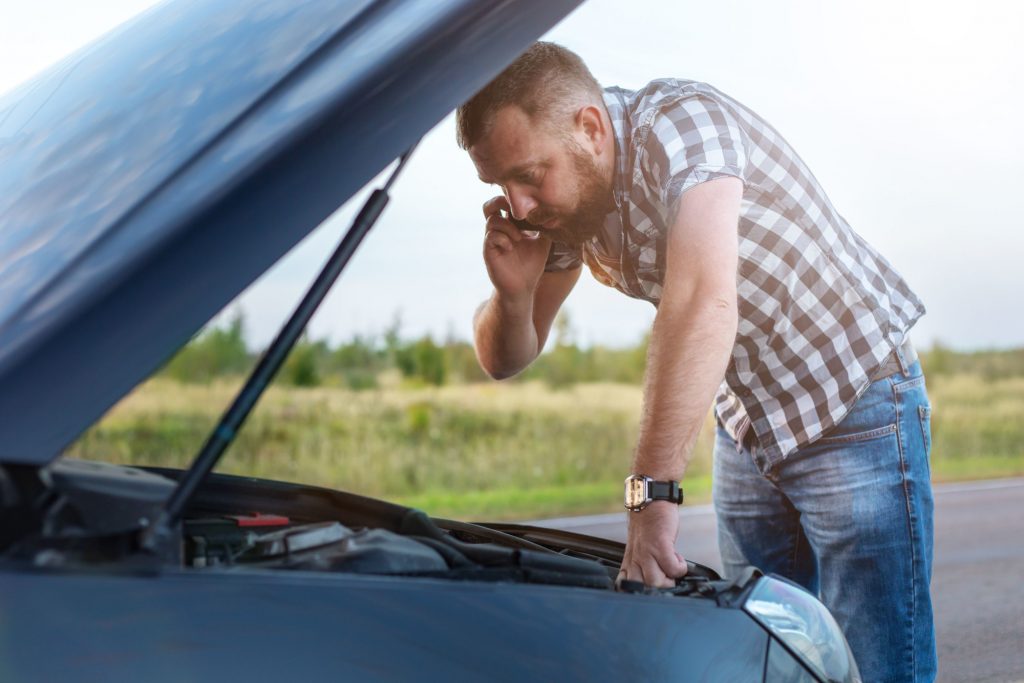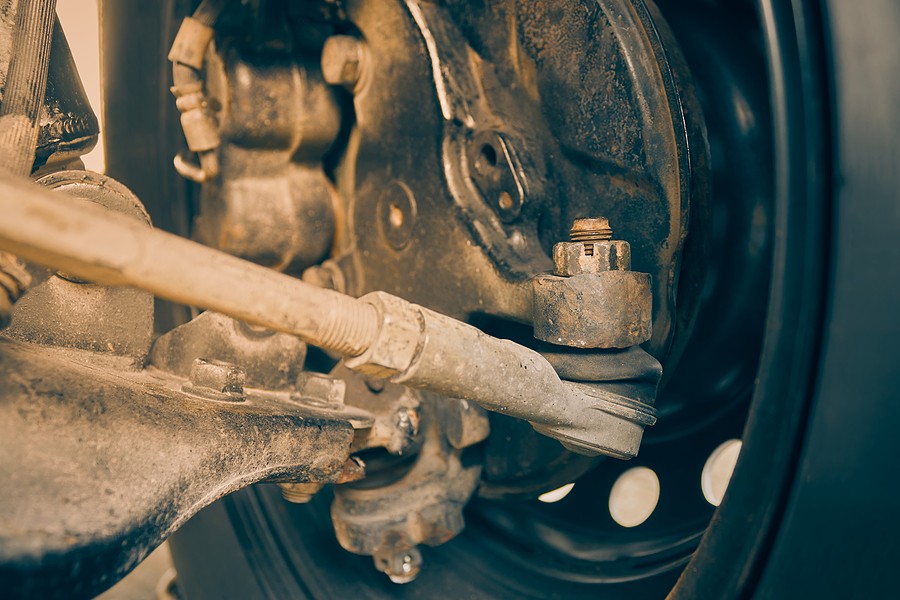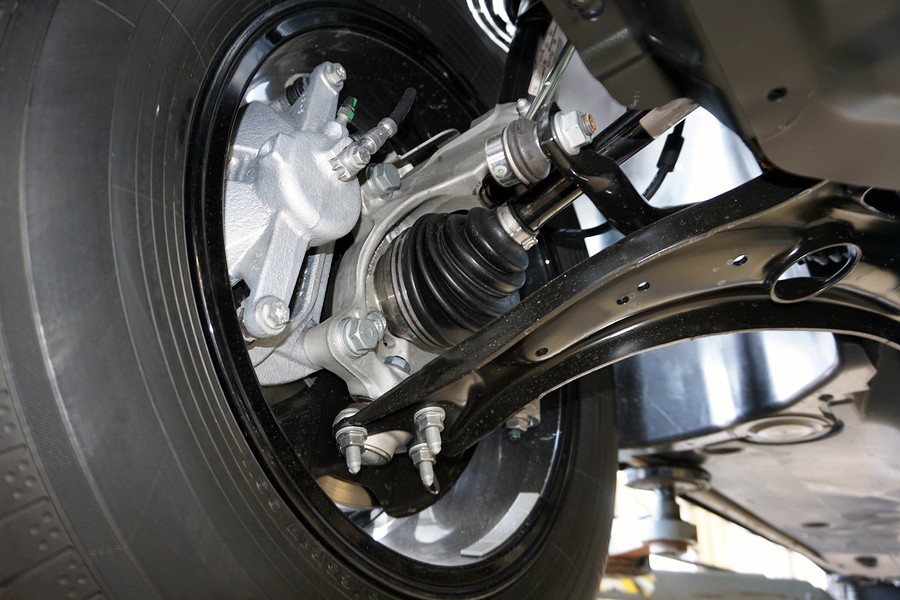When using your car, you depend on the tie rods and ball joints. These are the parts that connect your wheels to the steering column so they can turn. When these parts start to wear down, it's time for a replacement.
Ignoring bad tie rods is never a good idea. When you drive with bad tie rods, it becomes increasingly difficult to steer the car. The best solution is to replace them straight away or take your vehicle in for service.
The question always remains, what are the common Signs That You Need To Replace Your Tie Rods?
This article walks you through the most common signs of having a problem with your tie rods.
What are tie rods, and what do they do in a car?
A tie rod is a metal rod that attaches your wheel to the steering system. When you turn the wheel, it sends signals through these rods to ensure the wheels are turned in the right direction.
When these parts break down, it's not good, particularly because they're responsible for making sure your wheels turn in the right direction and that they're always pointing straight. If your wheels aren't properly aligned, you'll need to replace your tires more often.
It's important to get them fixed before they break down completely because it can be difficult for a mechanic to fix them once they've given up completely on life.

Signs That You Need To Replace Your Tie Rods
When the tie rods go bad, the car will start turning on its own. It'll make a significant difference in how your car turns, and it can even cause an accident if you don't get it fixed quickly.
More specifically, here are the ten common signs that you need to replace your tie rods:
1) You feel a jiggle or shudder when you drive over bumps
If your tie rods are bad, it will affect the way you turn and cause instability in your steering – which we're sure no one wants. If this happens to you, take it for service as soon as possible.
2) It isn't easy to steer left and right
When you have a bad tie rod, it's difficult to steer the wheel left or right. If this is happening, there's something wrong with your steering system. The first thing you need to do is take it for service, so they look and diagnose what is going on. It could be as simple as tightening up your bolts – which we're sure no one wants either – and it could also be that you'll need new tie rods.
3) You hear loud clunking sounds when turning
If you hear loud clunking sounds when turning – this usually happens in the front – then the odds are pretty good that your tie rods are experiencing some problems. Be careful because this can lead to more serious issues for your vehicle if not fixed.
4) It isn't easy to steer properly
Similar to the other signs, if you're having trouble steering properly, there may be something wrong with your tie rods. This could lead to other problems while driving, so take your car in for service as soon as possible if these signs start happening to you.
5) Your tires are wearing quickly
If you notice that your tires are wearing down faster than normal, then chances are very good that one or both of your tie rods could be causing this problem. If they've given up on life completely, they could affect the alignment of your wheels, which will cause more wear and tear on your tires.
6) Pulling occurs when taking turns
Have you noticed that your car pulls to one side when taking turns? If so, then the tie rod could be responsible for this problem. Pulling can cause uneven tire wear, which will affect how your tires are wearing down over time. It's also dangerous because it could lead to other problems while driving.
7) Loud clunking sounds or vibrations upon starting the engine
Loud or hard vibrations upon start-up signify something is wrong with the steering system. When these parts give up on life, they can make noises and resist turning the wheels. This isn't good for anyone who drives your car – especially you!
8) You get bad gas mileage or have to fill up more often than usual
Do you have to fill up your tank much more often than you're used to? The odds are very good that it's because your tie rods aren't working correctly. If they've given up, there could be a gas leak in the system, making you have to refill constantly.
9) There is a crack or hole in one of your tires
A broken tie rod can cause serious damage to your tire and even cause a flat tire. It can also cause uneven tire wear, affecting how long your tires last over time. Replacing these parts is important if you keep driving smoothly for years and years.
10) You don't feel comfortable while driving
If you find yourself constantly uncomfortable when driving, it might be because your tie rods are starting to go bad. This affects the way you steer, so if you notice that one or more of these signs start happening to you, then take your car in for service as soon as possible.
How much does it cost to replace the tie rods?
Replacing the tie rods on your car is an inexpensive service if you're looking at what you're doing yourself. If not, it could cost more based on your mechanic's hourly rate. On average, though, it costs around $100 to have this done by a professional mechanic who isn't bad for something so important for reducing wear and tear on your tires and making sure you stay safe while driving.
If you don't want to deal with the hassle of replacing the tie rods yourself, then we suggest taking it in to a local mechanic that can take care of everything for you.
Note that tie rods' replacement cost might differ by vehicle brand. For example, the tie rods replacement cost for a Honda Civic is typically between $80 & $100, whereas the tie rods replacement cost for a Jeep Grand Cherokee could be up to $250.
How long do tie rods last?
In general, the life expectancy of the drive-side and passenger-side tie rod ends can range from 40,000 – to 60,000 miles. Furthermore, the average lifespan of a tie rod is between 4 and 7 years.

How to replace your tie rods?
If you're planning to replace your tie rods, you'll need to follow an appropriate procedure. Here are the recommended steps for replacing your vehicle's tie rods:
Step 1: Raise your vehicle to gain access to the tie rods
First, you'll want to make sure that you use jack stands for safety reasons. Make sure you place them on a flat surface underneath your vehicle's frame before raising it with a hydraulic lift or an automotive jack. Place additional supports under the engine cradle and the axle housing to ensure stability and security.
Step 2: Remove the tie rod end from the steering knuckle
Once your vehicle is elevated, you can remove one of the front wheels from the vehicle for easier access. Once this is done, use a wrench to loosen up the nut that secures the tie rod end to the spindle arm. This will allow you to pull off both parts very easily. With these components removed, you can now begin detaching other parts on each side of your car by following similar procedures as before. Be sure not to try and detach any part that still has bolts or nuts on them because they are likely holding important pieces together.
Step 3: Replace worn out tie rod ends with new ones
If the end of your tie rod is worn out, then you'll want to purchase a new one from an auto parts store. Do not attempt to use the old part if it has already been damaged. Follow all of the steps you followed before completing this task and reattach both parts of your vehicle's new tie rod together with a wrench.
Step 4: Repeat process on another side
When you have replaced both sides of the tie rods, repeat the above tasks for replacing them on the other side. Then, replace your car's front tires and lower your vehicle back down to the ground so you can take it for a test drive!
Common problems with tie rods and how to avoid them
When you take care of your tie rods, they will last longer and won't cause any problems. However, there may be different problems with these parts when neglected or abused, leading to accidents if not fixed in time. Here are some common issues you may need to deal with when it comes to tying rods:
Tie rod ends wear out over time
Over time, tie rod ends wear out due to the normal movement of your steering wheel as you drive. This causes them to detach from their mount before reaching the end of their life cycle, so it's best to have them replaced right away before driving around without a fully functional set of tie rods on your car.
Tie rod ball joints break loose
If the ball joints of your tie rod assembly are not tight enough, then they can come loose or even break altogether in some cases. This will cause them to detach from their mount, which can affect how easily you can steer your vehicle.
Trouble steering wheel
Just like tie rod ball joints, steering wheel alignment between the two sides of the front axle should be properly aligned for you to drive safely on the road. If this is out of line, then it could become increasingly difficult for you to drive properly and maintain control of your vehicle whatsoever.
Signs That You Need To Replace Your Tie Rods FAQs
This section answers the most frequently asked questions concerning tie rods and other important replacement parts.
What does a bad tie rod sound like while driving?
Since tie rods are responsible for how easy it is to steer your vehicle, a bad set of these parts can lead to a difficult time if you don't replace them in time. It may even feel like the steering wheel will detach from your car's front axle or lock up, so you have to be aware of this problem when driving around.
Can I replace tie rods myself?
Since tie rods are relatively low-cost parts that do not require special tools to replace, you can easily replace them yourself if you have the time and patience to go through the process. However, it is best to hire a mechanic if you lack experience in this area because they could accidentally make your car's problem even worse due to their inexperience.
Can you drive with a broken tie rod?
Since tie rods are responsible for keeping your car properly aligned and allowing you to steer your vehicle, you will not be able to drive properly if one of these parts is broken. You'll need to get it replaced as soon as possible before driving your car anymore because the problem could get worse over time.
Is there a way to repair a loose tie rod?
While it is possible to tighten the ball joint connecting your tie rods, replacing them if they are loose or worn out is much better than trying to repair them. If not replaced in time, this could lead to further problems with how easily you can steer your vehicle, so take care of this right away before driving around any longer.
Do you need a front-end alignment after replacing the tie rod?
Yes, you will need to get your car's front-end alignment checked after replacing any part of your tie rod assembly. Since different parts of the tie rods work together for a smooth steering wheel motion and wheel alignment between the front axle, you must take care of this by getting an alignment check at a local auto repair shop to protect yourself against future accidents.
How long does it take to replace a tie rod?
It can take anywhere from a couple of hours to several hours, depending on the mechanic's experience doing the work. Of course, it will cost you more if you hire a professional mechanic rather than learning how to replace your tie rods.
How many tie rods are on a car?
Most passenger vehicles have four tie rods, but some have six. Trucks and SUVs can also be equipped with a pair of extra-large tie rods for greater stability and a smoother ride.

Conclusion
Tie rods are the most important part of any vehicle that needs to be replaced when they become too worn or loose. If you have trouble steering your car, it may not just be a flat tire but also a broken set of tie rods. Pay attention to signs like difficult steering and take care of this problem before driving around in traffic by getting an alignment check at a local auto repair shop.



